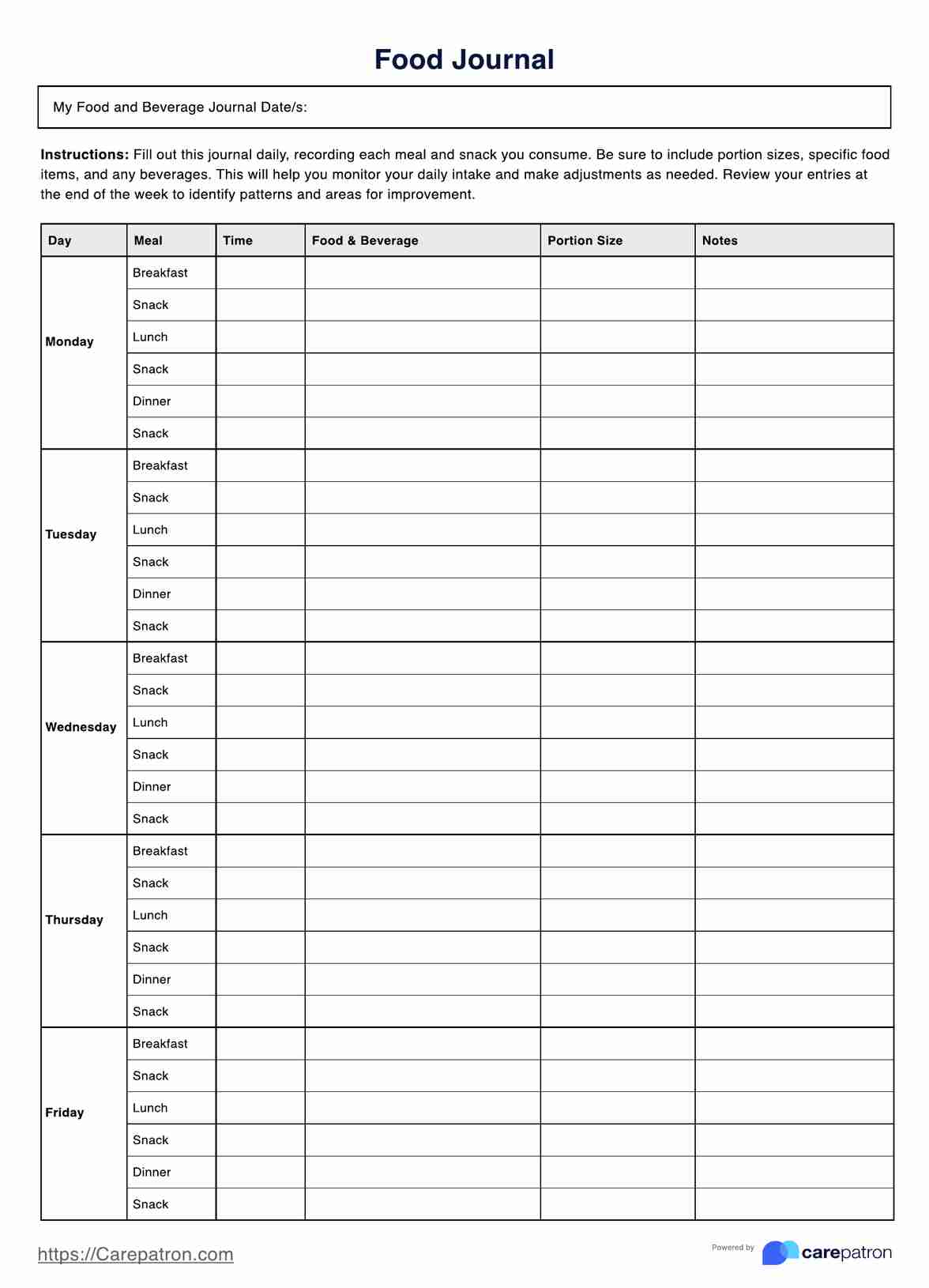This printable food journal was created by our team of health experts and professionals at Carepatron. It aims to provide a valuable resource for users to track their dietary habits and make informed decisions about their nutrition.

Food Journal
Discover the benefits of tracking your eating habits with our printable food journal. Download the free PDF and improve your dietary choices today!
Food Journal Template
Commonly asked questions
To use the food journal, simply download the free printable pdf, print it, or save it on your device, and fill it out daily with details of your food and beverage consumption, portion sizes, and relevant notes.
Review your entries regularly to interpret the food journal results, looking for patterns, trends, or areas needing improvement. This may involve identifying unhealthy habits, excessive portion sizes, or an imbalance in food groups. Use these insights to make targeted adjustments to your diet and work towards achieving your health goals. You can also consult a nutrition professional to help analyze your food journal and provide personalized recommendations based on your unique needs and objectives.
By consistently using the printable food journal and applying the insights gained, users can develop healthier eating habits, make more informed dietary choices, and ultimately improve their overall health and well-being. Whether you are working towards specific health goals or simply want to become more aware of your eating habits, a food journal is an invaluable tool for fostering self-awareness and encouraging positive change.
EHR and practice management software
Get started for free
*No credit card required
Free
$0/usd
Unlimited clients
Telehealth
1GB of storage
Client portal text
Automated billing and online payments











